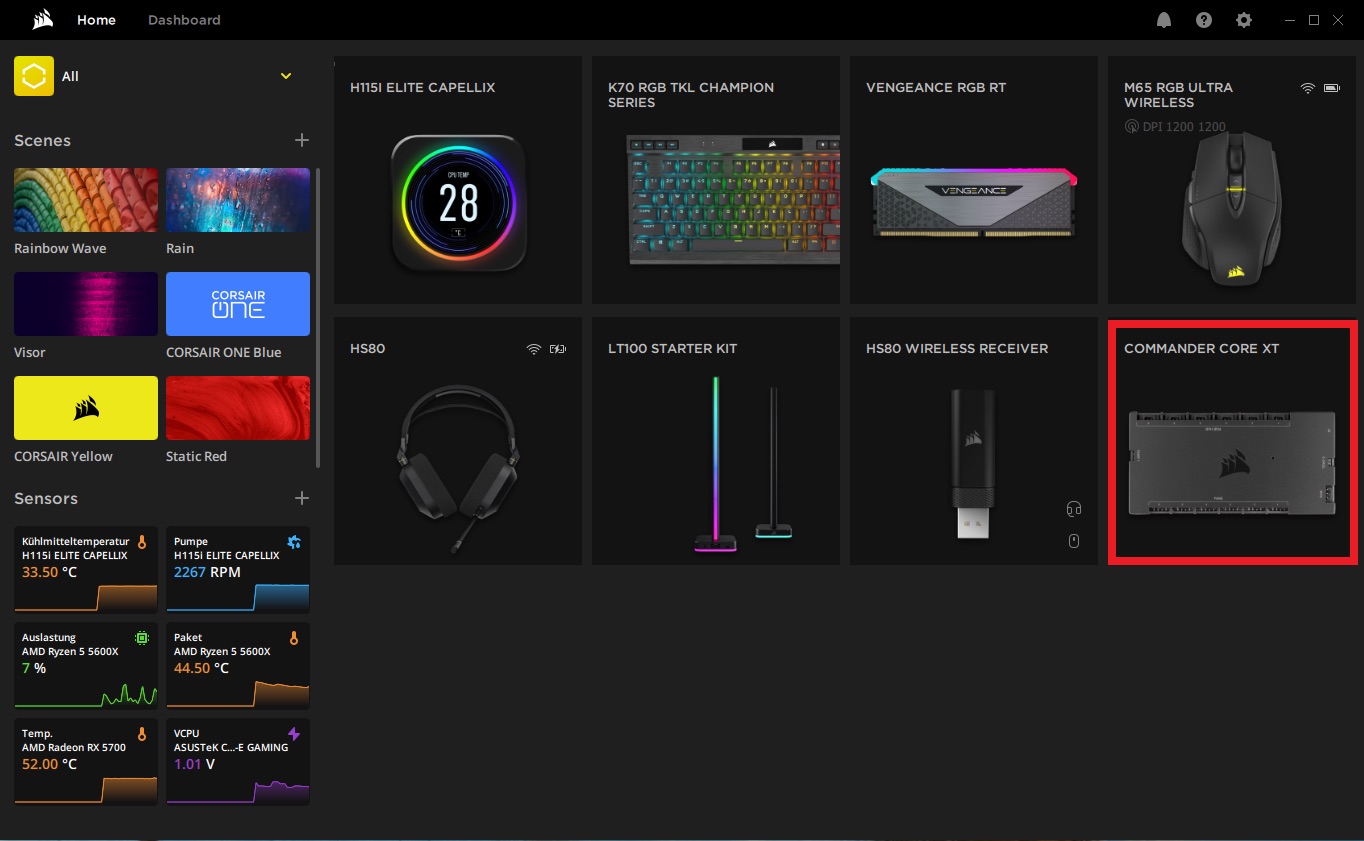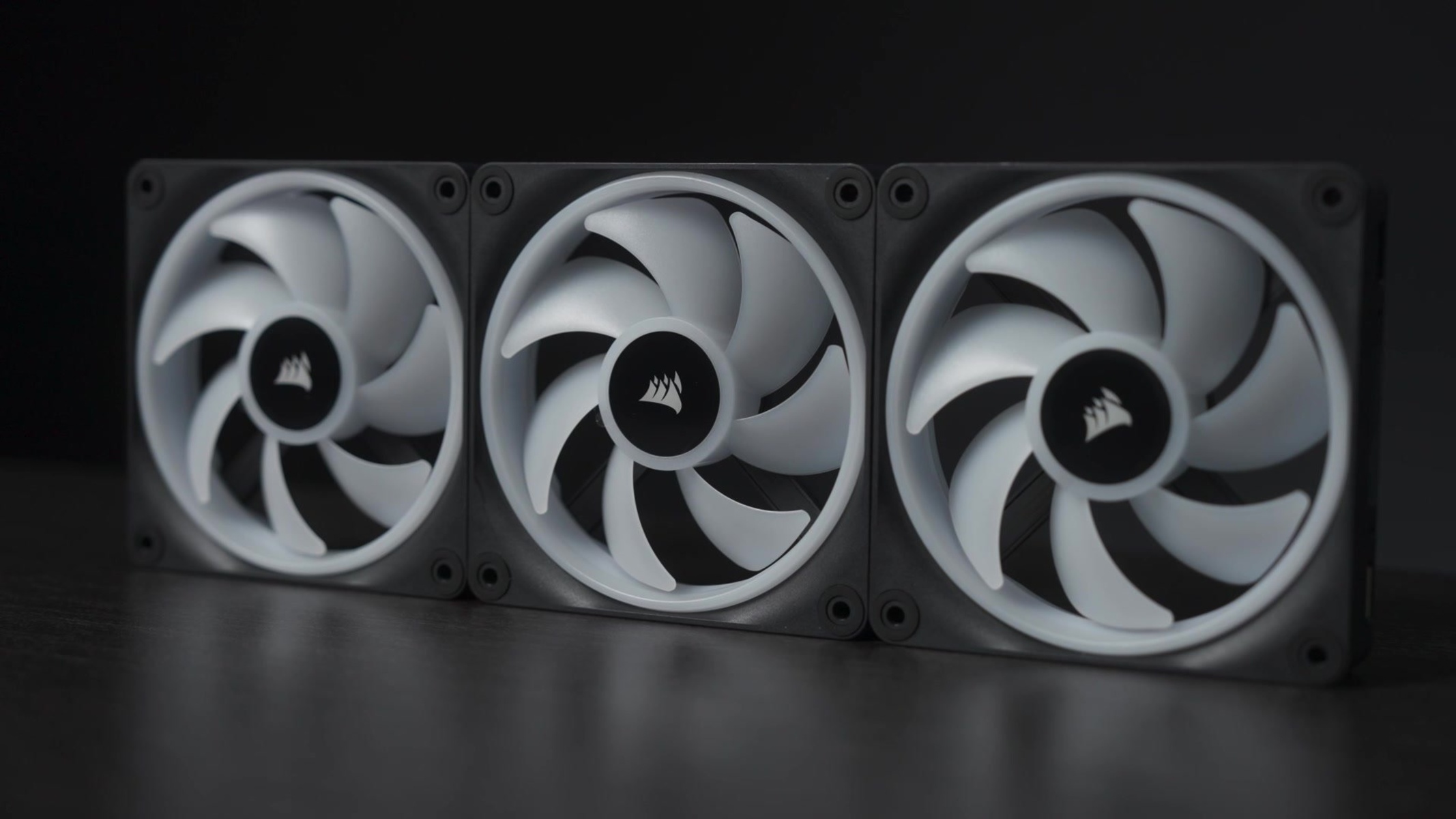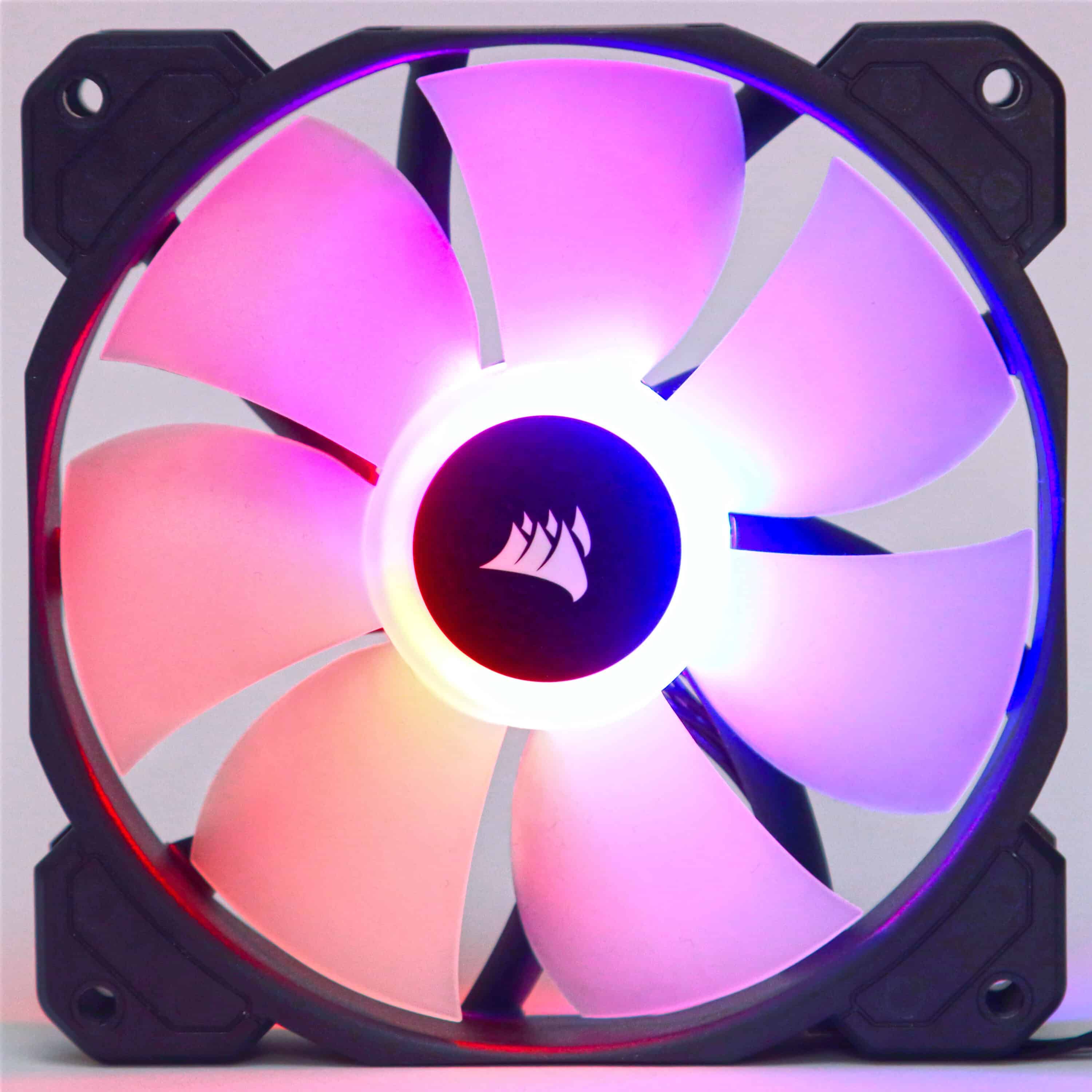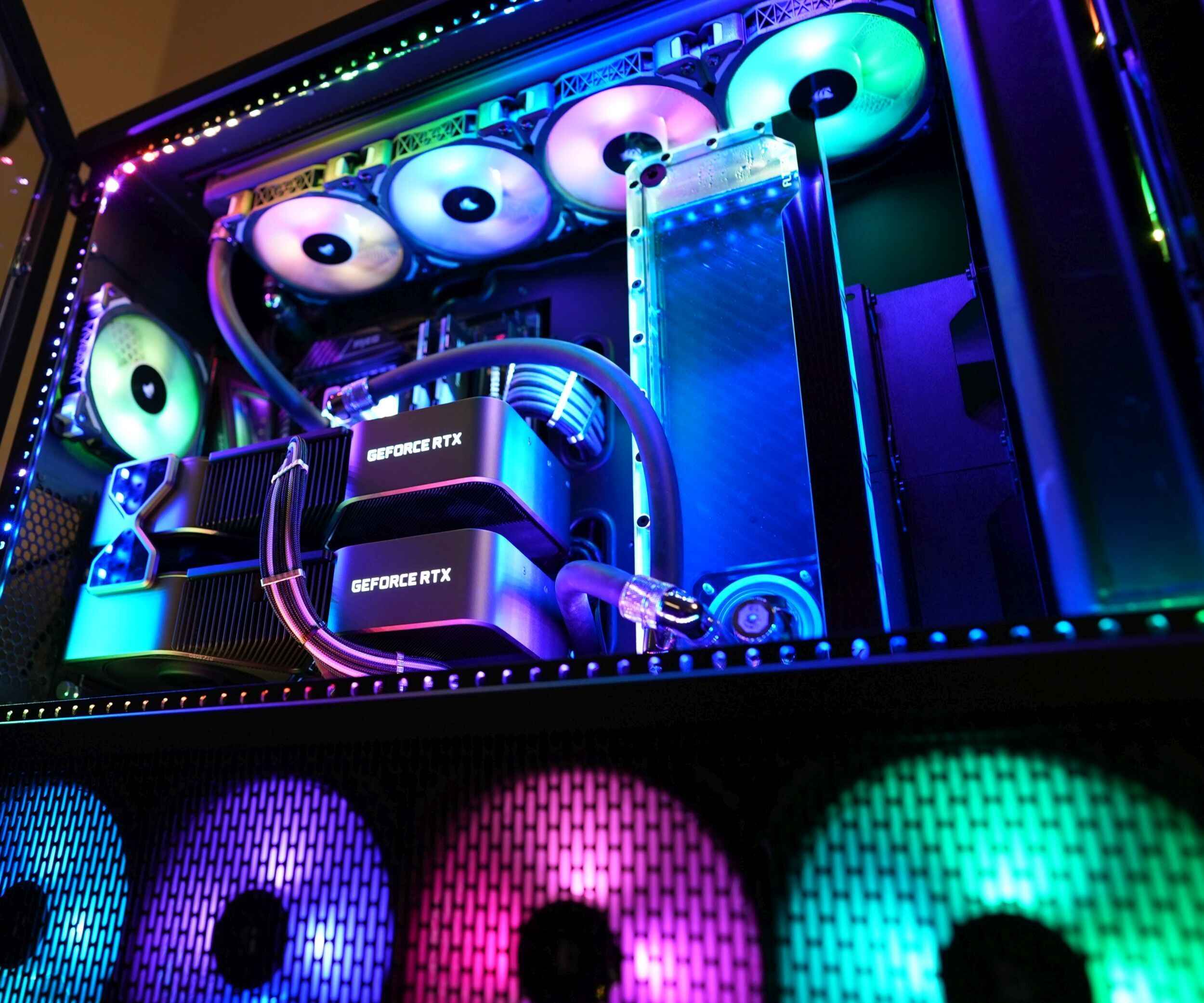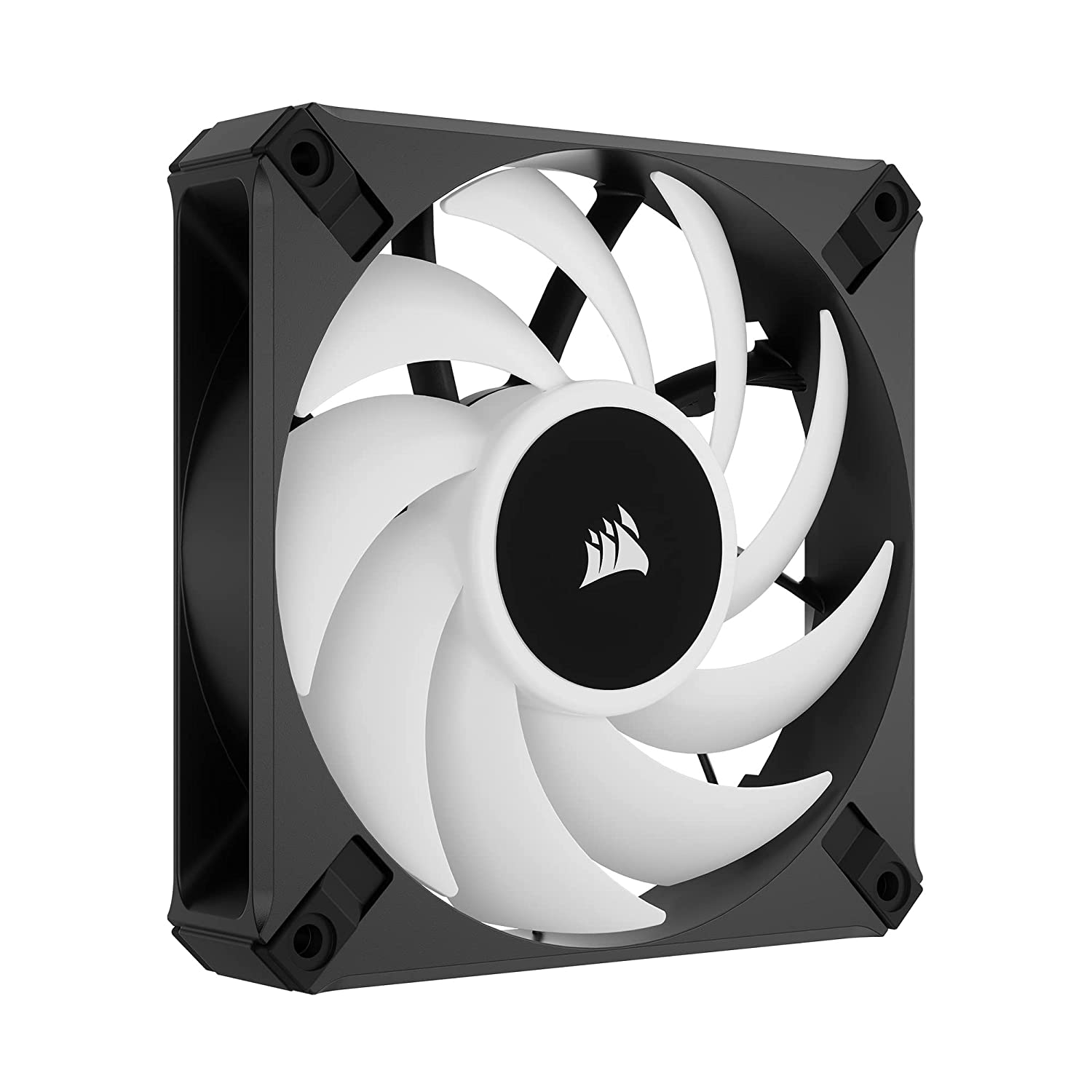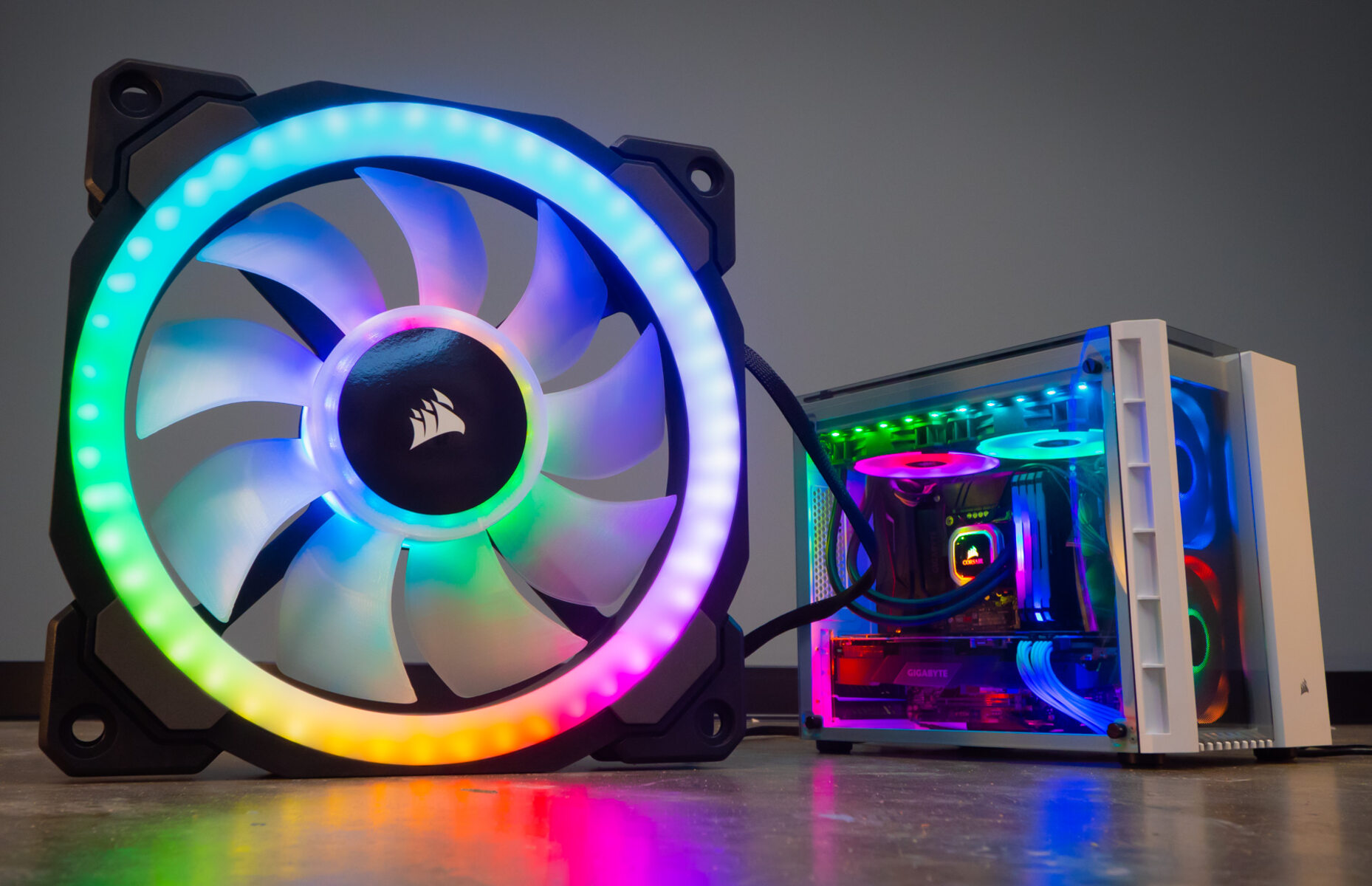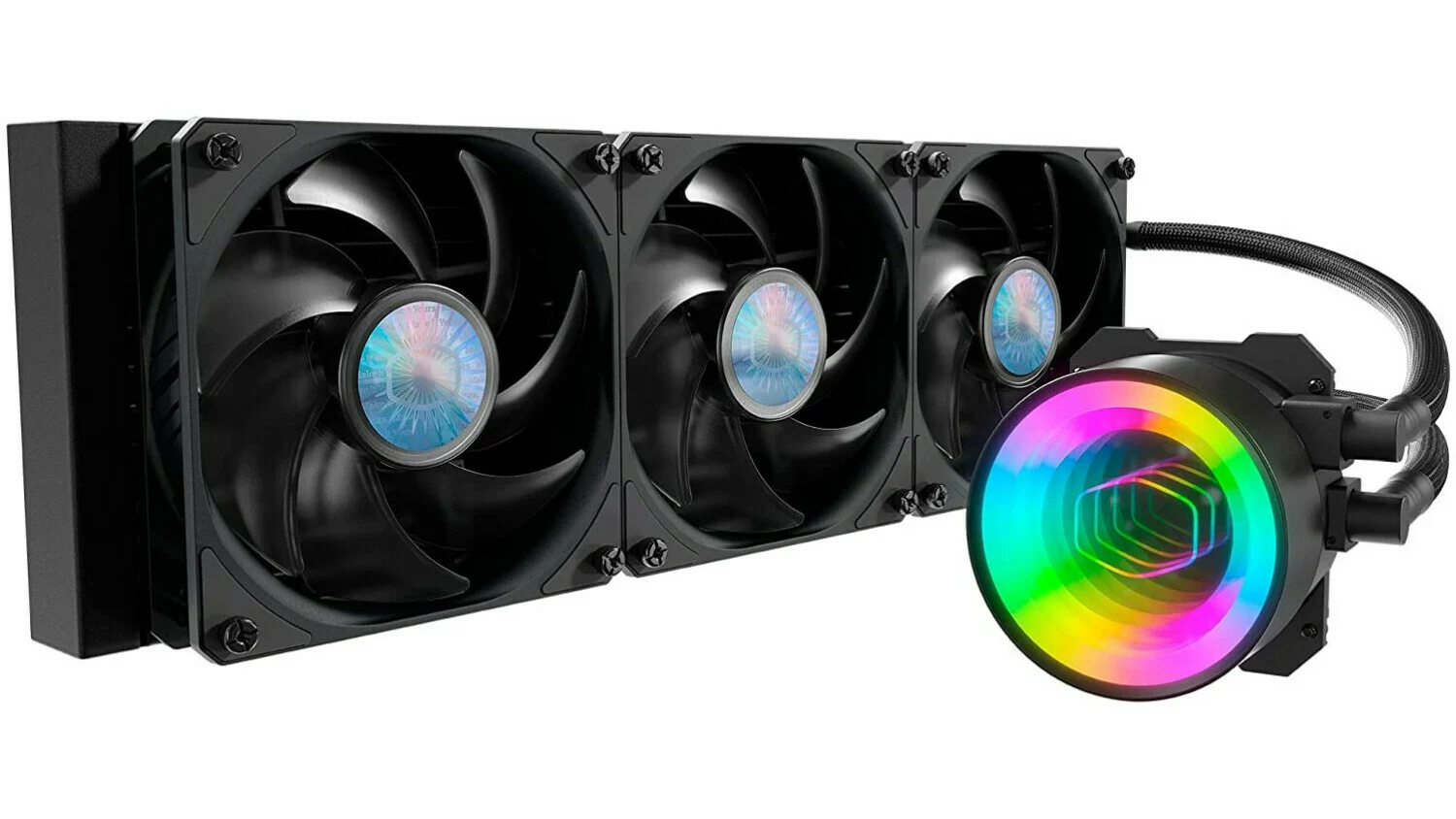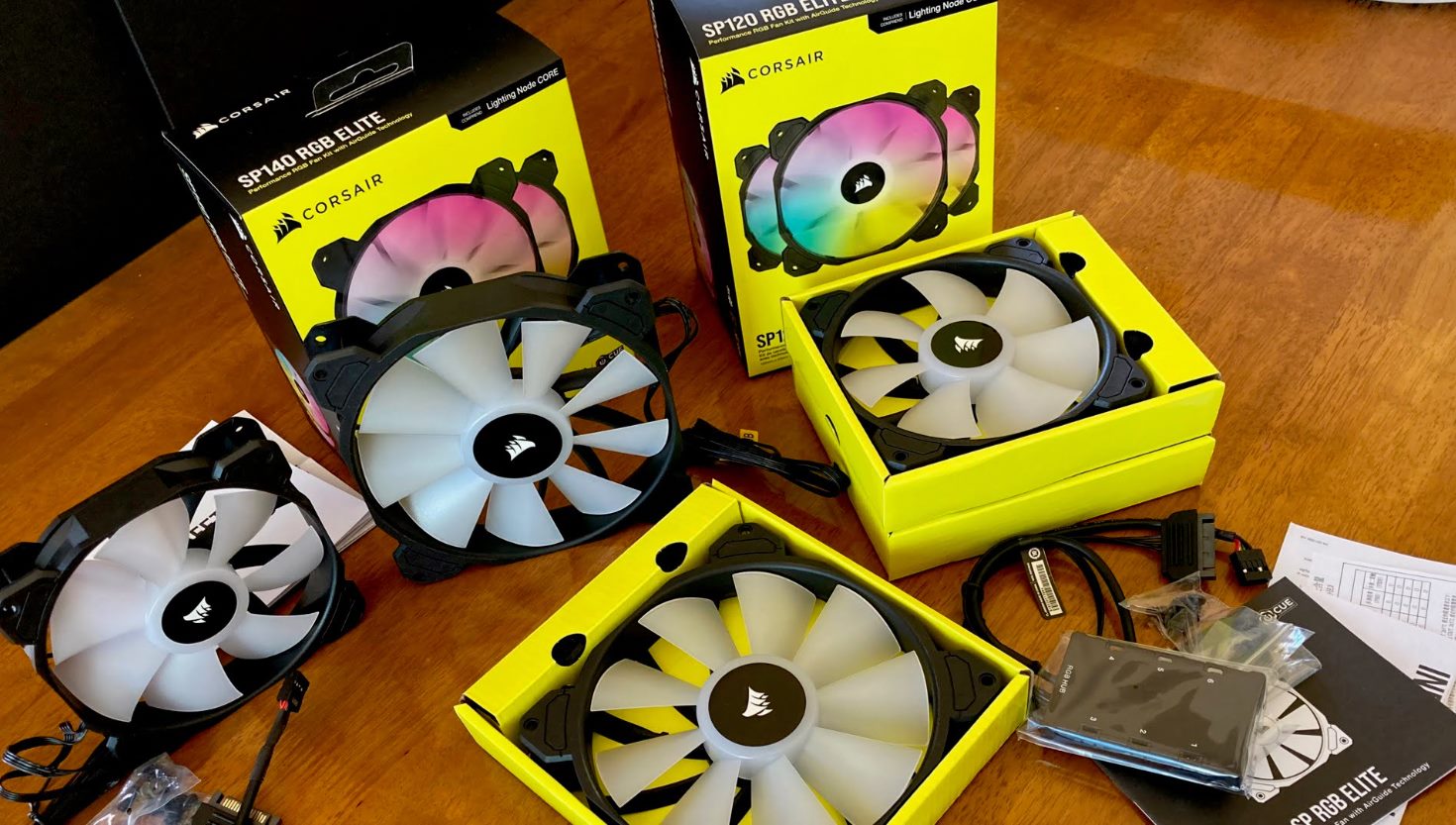Introduction
Welcome to this guide on how to control Corsair case fan lights! Corsair is renowned for its high-quality computer components and peripherals, and their case fans are no exception. These fans not only provide exceptional cooling performance but also feature stunning RGB lighting effects that can elevate the aesthetics of your gaming rig or workstation.
Having control over your Corsair case fan lights allows you to customize and synchronize the lighting effects to match your personal style or create immersive lighting experiences that enhance your gaming sessions. Whether you want a calm and soothing color scheme or a vibrant and dynamic light show, this guide will walk you through the steps to control Corsair case fan lights to meet your preferences.
We will cover the different Corsair case fan models available, how to connect them to your motherboard, and the installation of the Corsair iCUE software, which is the key to controlling the lighting effects. Furthermore, we will explore the various customization options available within iCUE and how you can sync the Corsair case fan lights with other RGB components, such as RAM, keyboards, and mice.
Additionally, we will discuss how you can control Corsair fan lights using physical buttons, providing you with a convenient way to adjust the lighting effects without relying solely on software control. Lastly, we will address common issues that may arise with Corsair case fan lights and provide troubleshooting tips to help you resolve them.
Whether you’re a seasoned PC enthusiast looking to enhance your RGB setup or a beginner eager to dive into the world of vibrant lighting effects, this guide will equip you with the knowledge and tools necessary to control Corsair case fan lights with ease. So, let’s get started and unlock the full potential of your Corsair fans!
Corsair Case Fan Lights: An Overview
Corsair case fan lights can transform the appearance of your computer by adding a mesmerizing RGB glow. These fans are designed not only to cool your system but also to provide a visually stunning experience. With a wide range of customizable lighting effects, you can personalize your gaming rig or workstation to suit your style and preferences.
Corsair offers a variety of case fan models, each with its own unique features and lighting capabilities. Some models, such as the Corsair LL series, come equipped with multiple RGB zones, allowing for intricate lighting patterns and effects. These fans utilize translucent blades and a translucent housing to diffuse the light evenly, resulting in vibrant and captivating illumination.
One of the standout features of Corsair case fan lights is their compatibility with the Corsair iCUE software. iCUE is a powerful control center that enables you to customize and synchronize your Corsair RGB components effortlessly. Through iCUE, you can fine-tune the lighting effects, adjust the color spectrum, and create mesmerizing animated patterns. The software also offers pre-set lighting profiles, making it easy to select and apply different themes with a single click.
Controlling Corsair case fan lights is not limited to software control alone. Corsair has integrated physical buttons on some of their fan models, allowing you to adjust the lighting effects on the fly. These buttons provide convenience and accessibility, giving you direct control over the RGB lighting without the need for software interaction.
Corsair case fans can also be synced with other RGB components, such as Corsair RGB RAM modules, keyboards, and mice. This synchronization creates a harmonious lighting ecosystem, where all RGB components work together to produce a unified and visually stunning display. Whether you want a synchronized color scheme or interactive lighting effects that respond to your gameplay, Corsair makes it possible with their extensive RGB ecosystem.
In the following sections, we will guide you through the step-by-step process of connecting Corsair case fans, installing the iCUE software, customizing lighting effects, syncing RGB components, and controlling the lights using physical buttons. With these instructions, you’ll be able to unleash the full potential of your Corsair case fan lights and create a truly immersive and captivating lighting experience for your computer setup.
Step 1: Understanding the Different Corsair Case Fan Models
Before diving into controlling Corsair case fan lights, it’s important to familiarize yourself with the various models available. Corsair offers a range of case fans, each with its own unique features and lighting capabilities. Understanding the differences between these models will help you make an informed decision based on your requirements and preferences.
One popular series of Corsair case fans is the LL series, which stands for “Light Loop.” These fans feature stunning loop-shaped RGB lighting effects, with multiple RGB zones on both the fan blades and the outer ring. The LL series fans produce vivid and dynamic lighting displays, adding a mesmerizing glow to your system. They’re ideal for users looking for eye-catching lighting effects and high-performance cooling.
Another notable series is the ML series, short for “Magnetic Levitation.” These fans are engineered with magnetic levitation technology, which reduces friction and noise, resulting in quieter operation and improved longevity. The ML series fans offer customizable lighting effects and are known for their excellent airflow and cooling performance, making them a popular choice among enthusiasts and overclockers.
Corsair’s HD series case fans feature a unique design with individually addressable RGB LEDs positioned on the fan’s frame. This allows for intricate lighting effects and patterns, giving you full control over the color and intensity of each LED. These fans provide vibrant and customizable lighting, along with reliable cooling capabilities.
For users who prefer a more straightforward and budget-friendly option, Corsair offers the SP series. These fans have single-color LED lighting, typically available in red, blue, or white. While they may not have the same level of customization as the other models, they still provide adequate airflow and a touch of style to your system.
Corsair also offers fans designed specifically for radiator cooling. The ML PRO series is ideal for water-cooling setups, with high static pressure and low noise levels. These fans are equipped with customizable lighting to match the aesthetics of your cooling system.
By understanding the differences and unique features of these various Corsair case fan models, you can select the perfect fan for your needs. Whether you prioritize stunning lighting effects, high-performance cooling, or a balance between the two, Corsair has a fan that will meet your requirements. In the next step, we will explore the process of connecting Corsair case fans to your motherboard.
Step 2: Connecting Corsair Case Fans to Your Motherboard
Once you have chosen the Corsair case fans that best suit your needs, the next step is to connect them to your motherboard. Properly connecting the fans will ensure they receive power and allow you to control their lighting effects through software or physical buttons. Here’s a step-by-step guide to help you with the process:
- Start by locating the fan headers on your motherboard. These are typically labeled as “CHA_FAN,” “SYS_FAN,” or similar. Check your motherboard’s manual for the specific location and labeling of the fan headers.
- Take note of the fan’s connector type. Most Corsair case fans use a 3-pin or 4-pin connector. The 3-pin connector provides power and RPM monitoring, while the 4-pin connector, also known as a PWM (Pulse Width Modulation) connector, allows for more precise control over the fan speed.
- Align the fan’s connector with the corresponding fan header on the motherboard. Ensure that the pins on the connector match the holes on the header, and gently push the connector onto the header until it snaps into place. Be careful not to force it or bend any pins.
- If you have multiple Corsair case fans, you can daisy-chain their connectors together using fan splitters or hub. Alternatively, some Corsair case fans come with pre-installed fan hubs that allow for easier cable management and control.
- Repeat the process for each fan until all are properly connected to the motherboard. Take your time to ensure all connections are secure, as loose connections can cause the fans to malfunction or not receive power.
- Once the fans are connected, power on your computer and check if they are spinning. You can also enter the BIOS or use motherboard monitoring software to confirm that the fans are detected and running at the desired speed.
Connecting the Corsair case fans to your motherboard is a crucial step in controlling their lighting effects. If the fans are properly connected, you will have the ability to control their RGB lighting through Corsair’s iCUE software or use physical buttons if applicable.
It’s worth noting that some Corsair case fans require both a fan connection (for power) and a separate RGB connection. The RGB connection is usually a standardized 4-pin connector, such as an RGB header or an addressable RGB header, on the motherboard. Ensure that you make the necessary RGB connections if your Corsair case fans require it.
With your Corsair case fans successfully connected to the motherboard, you are now ready to move on to the next step: installing the Corsair iCUE software for complete control over their lighting effects.
Step 3: Installing the Corsair iCUE Software
To control the lighting effects of your Corsair case fans, you’ll need to install the Corsair iCUE software. iCUE is a powerful control center that allows you to customize and synchronize the RGB lighting of your Corsair components. Follow these steps to install the software and take control of your Corsair case fan lights:
- Visit the Corsair website and navigate to the support or downloads section. Look for the iCUE software and locate the latest version available for download. Make sure to download the version that corresponds to your operating system.
- Once the download is complete, locate the installer file and run it. Follow the on-screen instructions to proceed with the installation. Accept the terms and conditions and choose a suitable location to install the software.
- After the installation is complete, launch the Corsair iCUE software. It may take a few moments to initialize and detect your Corsair components.
- If prompted, create a Corsair account or log in to an existing account. This step is necessary to access advanced features and customization options within the software.
- Once you’re logged in, iCUE will automatically detect your connected Corsair case fans. You should see them listed in the software’s user interface. Click on the appropriate fan icon to access the lighting settings for that fan.
- In the fan settings, you’ll find various options to customize the lighting effects. These can include choosing different colors, selecting pre-set lighting patterns, adjusting brightness and speed, and creating custom lighting profiles. Explore these options and experiment to find the perfect lighting configuration for your setup.
- Additionally, iCUE allows for advanced customization and synchronization with other Corsair RGB components. You can create lighting profiles that synchronize the colors, patterns, and effects of your Corsair case fans with other RGB components, such as RAM modules, keyboards, and mice. This enables a harmonious and visually stunning lighting experience across your entire system.
Congratulations! You have successfully installed the Corsair iCUE software and are now in control of the lighting effects for your Corsair case fans. Take the time to explore the various customization options available in iCUE and let your creativity shine. In the next step, we will delve deeper into customizing lighting effects using iCUE, so be sure to continue reading.
Step 4: Customizing Lighting Effects with iCUE
After installing the Corsair iCUE software, you have the power to unleash your creativity and customize the lighting effects of your Corsair case fans. iCUE offers a wide range of options to create stunning and personalized lighting configurations. Follow these steps to customize the lighting effects for your Corsair case fans:
- Open the Corsair iCUE software on your computer. Once launched, navigate to the fan settings by clicking on the appropriate fan icon within the software’s user interface.
- In the fan settings, you will find several tabs that allow you to customize different aspects of the lighting effects. This includes the ability to choose different colors, select from pre-set lighting patterns, adjust brightness and speed, and create custom lighting profiles.
- To change the colors of your Corsair case fans, click on the “Color” tab. Here, you can choose from a wide spectrum of colors or enter specific RGB values to achieve the exact shade you desire. You can also select multiple colors and create gradients or color cycles for a dynamic lighting effect.
- If you prefer pre-set lighting patterns, navigate to the “Effects” tab. iCUE offers a variety of built-in effects, such as static, rainbow wave, color shift, pulse, and more. Experiment with these effects and find the ones that best suit your taste.
- Adjusting the brightness and speed of the lighting effects can be done in the “Speed” and “Brightness” tabs. You can fine-tune these settings to achieve the desired intensity and movement of the lighting effects.
- For advanced customization, iCUE provides the option to create custom lighting profiles. In the “Lighting Effects” tab, you can select individual LEDs on the fan and assign different colors or effects to specific areas. This level of customization allows for intricate and personalized lighting setups.
Make sure to experiment with different combinations and settings to create unique lighting configurations that enhance the aesthetics of your computer setup. Once you’re satisfied with your customizations, save the settings and admire the captivating lighting effects on your Corsair case fans.
Remember, the Corsair iCUE software also enables synchronization with other Corsair RGB components. This means you can create lighting profiles that harmonize the colors, patterns, and effects of your case fans with other RGB peripherals, providing a cohesive and visually stunning lighting experience across your entire system.
With the customization options available in iCUE, you can truly make your Corsair case fans stand out and personalize your computer setup to match your unique style. In the next step, we will explore how to sync the lighting effects of your Corsair case fans with other RGB components for an even more immersive lighting experience.
Step 5: Syncing Corsair Case Fan Lights with Other RGB Components
One of the exciting features of Corsair’s iCUE software is the ability to synchronize the lighting effects of your Corsair case fans with other RGB components in your system. This allows for a seamless and visually cohesive lighting experience. Follow these steps to sync the lighting effects of your Corsair case fans with other RGB components:
- Launch the Corsair iCUE software on your computer and make sure all the Corsair RGB components, such as RAM modules, keyboards, and mice, are connected and detected by the software.
- Navigate to the fan settings by clicking on the appropriate fan icon within the iCUE software’s user interface.
- In the fan settings, look for the option to synchronize the lighting effects with other Corsair RGB components. This option may be labeled as “Lighting Link” or “Synchronization.”
- Enable the synchronization feature and choose the desired lighting profile that you want to apply to all the RGB components in your system. This will ensure that the lighting effects of your Corsair case fans are perfectly synced with the rest of your RGB setup.
- Some components may have additional customization options within their own software or firmware. Make sure to explore these settings and adjust them accordingly to achieve the desired synchronization and lighting effects.
- Take some time to fine-tune the synchronization settings, adjusting the colors, patterns, and effects of the RGB components. This will ensure that all the lighting effects work seamlessly together and create a vibrant and visually stunning display.
By syncing the lighting effects of your Corsair case fans with other RGB components in your system, you can achieve a cohesive and immersive lighting experience that adds personality and flair to your computer setup. Whether you’re a gamer looking to match your lighting effects with your in-game actions or simply want to create a visually striking workstation, synchronization is a powerful feature that enhances the overall aesthetics of your system.
Remember to save your settings after syncing the lighting effects. This will ensure that the synchronization remains in effect even after restarting your computer. Feel free to experiment with different profiles and customizations until you achieve a lighting setup that perfectly complements your style and preferences.
In the next step, we will explore how you can control the Corsair fan lights using physical buttons, providing a convenient way to adjust the lighting effects without relying solely on software control.
Step 6: Controlling Corsair Fan Lights with Physical Buttons
Controlling the lighting effects of your Corsair case fans is not limited to software control alone. Some Corsair fan models are equipped with physical buttons that allow you to adjust the lighting effects on the fly. This provides a convenient and tactile way to customize the lighting without needing to access the software. Follow these steps to control your Corsair fan lights using the physical buttons:
- Locate the physical buttons on your Corsair case fans. These buttons are typically located on the fan hub or on the fan itself, depending on the model. Consult your fan’s user manual for the exact location and functionality of the buttons.
- Take note of the different functions associated with the physical buttons. These functions can include changing colors, selecting lighting effects, adjusting brightness and speed, and powering the lighting on or off.
- Experiment with the physical buttons to familiarize yourself with their operation. Pressing the buttons will cycle through different color options, lighting effects, or brightness levels. Some fan models may also have buttons that allow you to save and apply custom lighting profiles.
- Use the physical buttons to select and adjust the lighting settings according to your preferences. Depending on the fan model, you may be able to create unique lighting configurations without the need for software interaction.
- Keep in mind that the physical buttons are an alternative control method and may have some limitations compared to the software control. It’s important to refer to the user manual or Corsair’s documentation to understand the specific functionalities of the physical buttons for your fan model.
Controlling your Corsair fan lights with physical buttons offers a straightforward and convenient way to adjust the lighting effects without relying solely on software control. This can be especially useful when you want to make quick changes or prefer a more tactile experience when customizing your lighting setup.
It’s worth noting that not all Corsair case fan models have physical buttons. If your fan lacks these buttons, you can still utilize the Corsair iCUE software to control and customize the lighting effects with precision. Additionally, the software allows for advanced customization options and synchronization with other RGB components, providing a comprehensive lighting control solution.
With the ability to control your Corsair fan lights through physical buttons or software, you have full flexibility in achieving the perfect lighting effects for your setup. In the next step, we will address common issues that may arise with Corsair case fan lights and provide troubleshooting tips to help you resolve them.
Step 7: Troubleshooting Common Corsair Case Fan Light Issues
While Corsair case fans are known for their reliability, there may be instances where you encounter issues with the lighting effects. Here are some common problems that you may come across and steps to troubleshoot them:
- No lighting: If the fan lights do not turn on, check that the fans are properly connected to the power source. Ensure that the fan connectors are securely attached to the fan headers on your motherboard. Additionally, verify that the power supply is supplying enough power to the fans.
- Inconsistent lighting: If the lighting effects are sporadic or flickering, the issue may be due to a loose connection. Check that all connections between the fans and the motherboard are secure. Also, examine the cables and connectors for any signs of damage.
- Unresponsive lighting: If you are unable to control the lighting effects through software or physical buttons, ensure that you have installed the latest version of the Corsair iCUE software. If the issue persists, try reinstalling the software or updating the firmware of your Corsair case fans.
- Discoloration or incorrect colors: If the fan lights do not display the expected colors or appear discolored, double-check your RGB connections. Ensure that the RGB connectors are properly inserted and that the arrows on the connectors align with the corresponding arrows on the headers.
- Frozen lighting effects: If the lighting effects freeze or become unresponsive, try restarting your computer and relaunching the Corsair iCUE software. If the issue persists, check for any conflicts with other software or utilities running on your system and try disabling them.
- No synchronization: If the lighting effects of your Corsair case fans do not synchronize with other RGB components, confirm that the synchronization feature is enabled in the Corsair iCUE software. Check that all Corsair RGB components are properly connected and recognized by the software.
If you have followed the troubleshooting steps above and are still experiencing problems with your Corsair case fan lights, it may be helpful to seek assistance from Corsair’s customer support. They can provide additional guidance and troubleshooting tailored to your specific setup.
By troubleshooting and resolving these common issues, you can ensure that your Corsair case fan lights operate smoothly and provide the stunning lighting effects you desire for your computer setup.
We hope this guide has provided you with valuable insights on how to control and customize Corsair case fan lights. Now it’s time to unleash your creativity and make your system come alive with captivating lighting effects. Enjoy the immersive and visually stunning experience that Corsair’s case fan lights can offer!
Conclusion
Controlling and customizing the lighting effects of your Corsair case fans is an exciting way to personalize your computer setup and create a visually stunning experience. Throughout this guide, we have explored various steps to help you achieve the desired lighting effects and maximize the potential of your Corsair case fans.
We began by introducing the Corsair case fan lights and providing an overview of the different models available. Understanding the features and capabilities of these fans allows you to make an informed decision when selecting the right model for your needs.
We then walked you through the process of connecting your Corsair case fans to your motherboard, ensuring they receive the necessary power and are ready for customization. The installation of the Corsair iCUE software was the next step, granting you control over the lighting effects and access to advanced customization options.
By customizing the lighting effects through the iCUE software, you have the flexibility to choose different colors, select pre-set or custom lighting patterns, adjust brightness and speed, and synchronize the lighting with other Corsair RGB components. This allows you to create a cohesive and visually striking lighting display that complements your style and preferences.
Furthermore, we discussed the option of controlling Corsair fan lights using physical buttons, providing a convenient and tangible way to adjust the lighting effects without relying solely on software control. We also touched upon some common troubleshooting steps to help you resolve any issues you may encounter with your Corsair case fan lights.
Ultimately, with the knowledge and guidance provided in this guide, you have the tools to unlock the full potential of your Corsair case fans and create a truly immersive lighting experience for your computer setup. Whether you’re a dedicated gamer, a content creator, or simply someone who appreciates the aesthetics of a well-lit system, Corsair case fan lights can elevate the visual appeal of your rig.
So, unleash your creativity, experiment with different lighting configurations, and find the perfect lighting effects that reflect your style. Enjoy the vibrant visuals and the captivating ambiance that Corsair case fan lights can bring to your computer setup. Your dream lighting experience awaits!







